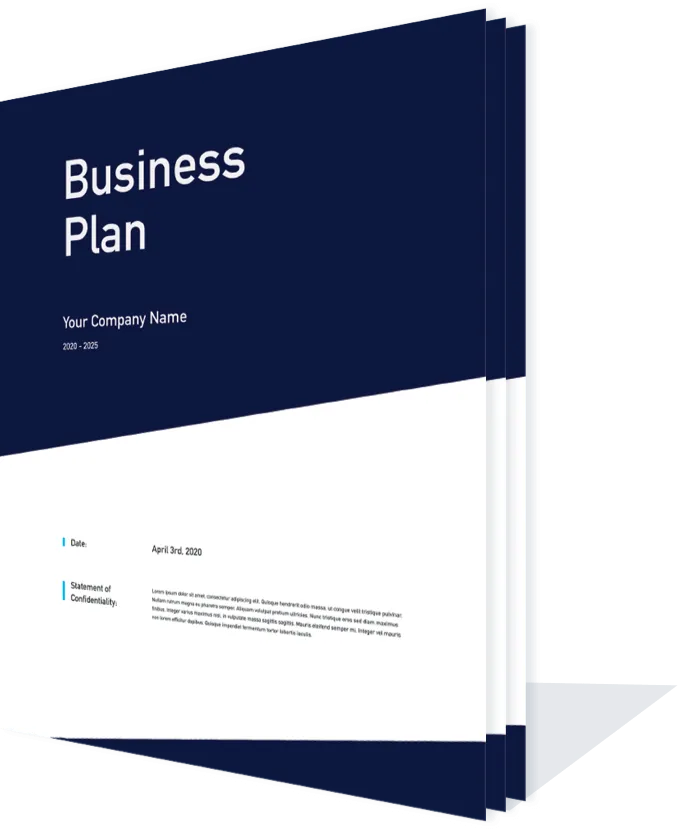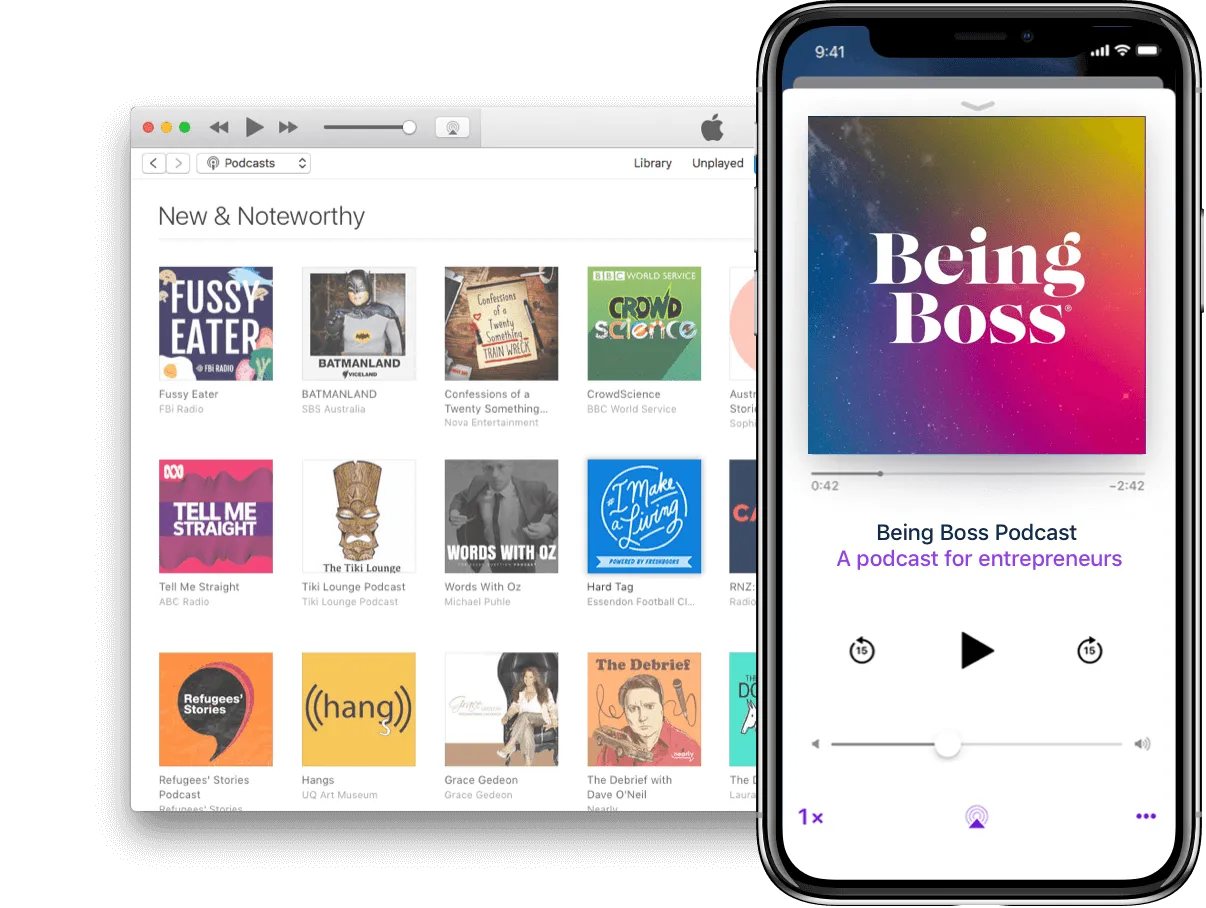Download a Business Plan Template
CREATED BY


Business Plan Template
by Being Boss and FreshBooks
So, you’re ready to take the first steps in starting your business – congratulations!
Though you have a lot of work ahead of you, starting and growing a company from the ground up is a bold endeavor. And, if set up correctly it will deliver many things you want out of your professional career, as well as help you achieve some life goals.
Freedom, creativity, control, impact… all of these things are possible with a small business. But only if you start with a clear understanding of yourself, your offering, and the customers you serve.
So, how do you make sure that the business you start will be everything you want it to be? To put you on the right path towards the business you’ve always dreamed of, you need to start with a business plan.
Emily Thompson, host of the top-ranked podcast “Being Boss”, knows what it takes to launch a business, do the work, and be boss in work and life. It’s been said that the first step on any journey is the toughest and while making a business plan might not be your first step, Emily is a firm believer that it’s an important one.


To many, building a business plan sounds like a daunting task, but with big ideas and even bigger goals, it’s an important step to ensure you have a clear picture of what kind of company you’re building. A business plan helps you lay a foundation and iron out the details so you have a succinct short-term and long-term idea of what you’re building. If you’re not sure where to start business plan template documents can help.
What Is a Business Plan Template
and How Can It Help You?
A business plan template is a basic framework for building a powerful business plan document for your new company. With a business plan template, you get a head start on identifying key elements of your
business. By identifying these key elements, your path becomes clear and easier to navigate.
A business planning template can take many forms, from a series of questions about your skills, offering, customers, and goals to a sample document where you can store information for the kind of company you wish to build.
Whatever the format, a business planner template guides your business planning to keep you focused, help you get clear, and creates a structure for bringing your new ideas into a concise document to guide your actions, as well as present your plans to people you might approach for help, such as investors.

Why Do You Need a Business Plan?
To begin, simply writing a business plan is a wonderful way to find clarity, purpose, and a path for your new company, because if we know anything about entrepreneurs, it’s this: you have a gazillion ideas and goals for your new venture. A business plan helps you hone in on the most important and relevant ideas for your new company, and helps you organize those thoughts into a usable plan.
Beyond finding clarity and organizing your ideas, your business plan is a place where you set goals for yourself and your business, as well as predict any struggles you may face to reach those goals. Additionally, business plans lay out a clear strategy for reaching those goals, setting you on the right path from the very beginning.
Also, there are several key elements you must understand about your new business before you begin. You need to have a clear understanding of the products and services you offer, who your dream customers are (aka your target market), and who your competitors are (through doing a market analysis). You also need to see if your business idea is even viable by doing financial projections, which will determine if the product or service you offer is actually capable of creating enough income (aka revenue) to cover expenses (aka cost).
Because an offering that doesn’t make money isn’t a business, it’s a hobby.
With all of this information laid out, business plans act as a concise rundown of all the major parts of your business, which you’ll use to go from idea to small business and beyond. This detailed summary of the business you’re starting includes a plan for actually making it happen.
Trust us: there’s a bit of magic that comes from getting clear on these aspects of your new business because from clarity comes power, and with power… nothing will stand in your way.
How to Structure a Business Plan
A business plan that you’re using for your own clarity and purposes can look like anything you want – include the elements that are important to you, write it on a series of napkins if you want to, or add as much creative flair as you need to inspire you to get it done. Then get started with your business. The important thing is that you simply get it down “on paper” so that you have the information you need to effectively provide the product or service of your business to those in your target market so that you can begin reaching your goals.
But, if you’re wishing to seek funding for your new business, whether that’s from a bank, from an investor, or even from your family, it’s very important that you have a plan with a clear structure and with key elements presented. That way not only you will find clarity in the direction and purpose of your new business, but others can see it as well.
A traditional business plan begins with a broad overview of your new company, including your business mission and goals, and moves into being more detailed, with your first steps of action, along with plenty of information in between. Your plan is a product of lots of research about your industry, your ideal customer, and your offerings. It also represents in-depth planning, by outlining your skills and how you’ll grow them, how much it’s going to cost to get started, and financial projections for your first years.
This plan will come together in a single document with clear organization that you can access anytime to keep you focused on taking just the right next step on your path.

What Goes Into a Business Plan?
There are several key elements that go into a complete and thorough business plan. With these elements, you have a complete picture of the company you’re here to start, which will become an invaluable resource as you begin taking your first steps, as well as when you begin checking-in in the coming months and even years. These elements include:
1. EXECUTIVE SUMMARY
Think of your executive summary as your birds-eye view of your company. It’s a summary of all other elements included in your business plan, and is the first (and sometimes only) element looked at by investors.
2. MISSION + VISION
Why are you starting your business? What do you imagine it being in 5 years? In this section of your business plan you share the reasons behind your business and where you see it going in the near and distant future.
3. GOALS
Laying out clear goals for your business will give you context for all the work ahead. Think about business and life goals, and create goals for the short-term (6-12 months), mid-term (12-24 months), and long-term (24 months +).

4. SKILLS + EXPERIENCE
Think of this section as a personal resume; what skills and experience do you have that will be relevant for this venture, but also what skills do you need to grow or gain to make you a valuable asset to your new business?
5. PRODUCTS/SERVICES
Now we begin getting to the meat of business plans: a clear description of your products and/or services, including what they are and how you will be delivering them to your clients or customers. This should include description, deliverables, benefits for your customers, and price.
6. TARGET MARKET
You know what you’re doing, but who are you doing it for? Getting very clear on your dream customers, the group or groups of people you will be serving with your business is an important element for shaping your product or service correctly, as well as marketing effectively.
7. INDUSTRY/COMPETITION
An understanding of your industry (24-hour gyms, or bakeries, or web developers) and your competition is important to crafting the right product or service, and making sure your idea is viable.
8. OPERATIONAL PLANS
In order to get your business off the ground, what do you need? Perhaps it’s a few hires, or sourcing some information or products; whatever you need, this is where you lay it out.
9. MARKETING PLAN
With a full layout of what you’re selling and who you’re selling it to, it’s time to get an understanding of how you’ll get your offering in front of the right people with a clear marketing plan.
10. SALES FORECAST/FINANCIAL PROJECTIONS
How effectively do you think your marketing will be? How long will it take for you to meet your goals? Through financial projects, you’re able to see the work you have to do to meet your version of success.
11. START-UP EXPENSES
Finally, what do you need to get the ball rolling? A clear understanding of your start-up expenses is imperative for jumpstarting your business towards success.

Find Your Community
You’re on your way! Being the boss of a business you built for yourself is highly gratifying, especially when your actions align with your values, which is what this business plan template will help you do. And if you need help fleshing it out, let me walk you through it step-by-step in this special episode of the Being Boss podcast.
Download a Business Plan Template



